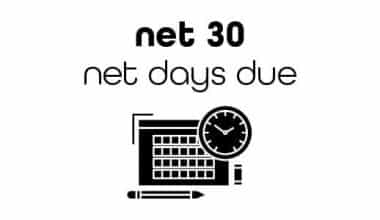The ability to generate reliable budgets and the use of insightful software are two of the most crucial procedures in terms of a company’s financial well-being and the quality of its business judgments. Creating a budget and the difficulties and rewards that come with it are topics we’ve previously explored in depth. Also included are suggestions on how you might expedite your own free small business budgeting software tools. In this piece, we’ll examine what budgeting tools are, steps to make budgeting, and of course Quicken budget software. Just read on!
What Are Small Business Budgeting Tools?
Free small business budgeting software tools can help plan and manage financial projections for a company’s future success. These business budgeting tools are for this purpose. Many firms are still using outdated methods such as paper-based records, spreadsheets, or pricey, on-premise software. Spreadsheets have the disadvantages of being time-consuming to use, prone to human error, and designed for a single user. Legacy software presents similar challenges, such as high deployment costs, limited functionality, and complex integration requirements.
When creating Cube, we aimed to address all of these issues. Cube is a financial platform developed by financiers. We listened to the concerns and issues of the financial department, and we addressed each one individually to develop the most robust, adaptable, and, most importantly, effective small free business budgeting software tools available.
What Are the Types of Business Budgeting Tools?
These are the types of business budgeting tools software:
#1. Incremental Budgeting
Standard budgeting is also termed “incremental budgeting.” As a rule, the previous year’s budget is merged with the current year’s numbers and predictions for the balance of the year. These amounts are a starting point for the real budget.
Incremental budgeting is another name for the common method we just talked about. As a rule, it uses the prior year’s budget as a starting point, and then adds in actuals from the current year thus far and projected figures for the rest of the year. These are not the final budgets, but they do provide a foundation upon which to construct the actual budget.
#2. Activity-Based Budgeting
The top-down method of activity-based budgeting (ABB) prioritizes the results that a company hopes to see. Therefore, it asks, “What must we do as an organization to fulfill our fundamental goals?” and proceeds backward from there. ABB then determines the extent to which various resources and activity levels must be allocated to achieve these goals.
#3. Value Proposition Budgeting
The third strategy is value proposition budgeting. For each line item or budget category, you ask, “Why are we spending this money?” Also, “How does it help our customers, employees, or investors?” A place in the middle between “zero-based” budgeting and “incremental” budgeting, which some might say isn’t strict enough (which calls for managers to justify virtually every line item in the budget, as does the approach used below).
Value proposition budgeting is an alternative to activity-based budgeting that focuses on the value that spending brings to the business instead of insisting on a direct link between spending and strategic goals to prove the worth of spending.
#4. Zero-Based Budgeting
In ZBB, we begin with no predetermined spending or saving goals. Managers using this method must create a spending plan for the upcoming year and provide an explanation for every line item, regardless of the amount spent in previous years. A business doesn’t have to spend the same amount of money it did in the past.
#5. Driver-Based Budgeting
Driver-based budgeting (DBB) links budget numbers to the material resources a company requires to accomplish its goals for the primary elements that affect business success.
The number of customers or subscribers, the number of salesmen or distributors, and the average revenue per customer are also, examples of internal metrics. The size of the overall market, the cost of raw materials, and even the weather could be examples of such outside influences. DBB formulates a spending plan by first identifying the most important goals for the business, then making some initial assumptions regarding external drivers and basing their decisions on actual outcomes with respect to internal business drivers.
Why is Budgeting Software Useful to Businesses?
Businesses of all sizes can benefit from using budgeting software, but those with complex budgeting and financial planning requirements may find it particularly helpful. Account-Ability has worked with Corporate Planner as an implementation partner for more than 24 years. During that time, we have seen the benefits that an integrated budgeting and reporting software solution can offer to companies in a variety of industries, from small regional businesses with a turnover of £20 million to large international corporations listed on the FTSE 250.
- Improved financial management
- Operations Planning
- Performance Evaluation
- Enhancing Growth Planning
- More effective Cash Flow Management
What are the Six Basics of Building Budget?
Perspective is everything when it comes to budgeting. A budget is doomed to fail if you view it as the sole thing standing between you and a more extravagant way of living. Your budget stands a much better chance of success if you view it as the means to greater financial independence. With the right frame of mind serving as a starting point, the rest of your spending plan may take form. The following are the six foundational pillars upon which a functional budget must be built.
- Calculate your income
- Categorize your expense
- Evaluate your spending
- Follow the 50//30/20 rule
- Track your purchases
- Check your budget often
Free Small Business Budgeting Tools
The following are the top free small business budgeting software tools.
#1. Cube
You can use your existing spreadsheet with the Cube real-time FP&A platform. However, we offer a comprehensive set of applications for handling your data management, reporting and analysis, and planning and modeling needs. offering a comprehensive overview of your company from every angle. Time periods of the past, the present, and the future.
Because of Cube’s automation of the tedious, time-consuming manual FP&A procedures that are meant to fill your days and nights, you can now spend your time on the high-value strategic research and storytelling that drives future business performance.
#2. Anaplan
With the help of Anaplan, a cloud-based financial analysis and planning platform, firms can also, confidently orchestrate business performance and carry out financial choices. With this program, you may map out intricate financial plans in great detail. You can enable your employees to make better, data-backed decisions, as well as generate projections and long-term initiatives. Cloud-based Anaplan facilitates the orchestration of business performance and the execution of financial choices with assurance.
Utilizing this program, you may map out intricate financial plans in great detail. Moreover, you can enable your teams to make better, data-backed decisions while developing predictions and long-term strategies.
#3. Vena
With Vena, you can plan and manage your finances with the ease of Excel and the power of Vena’s growth engine. Tools inside this program facilitate communication, streamline crucial procedures, and propel improved data-driven solutions for businesses of all sizes in the finance department.
#4. Oracle PBCS
Oracle is an enterprise performance management system. With the help of this program, FP&A groups may develop evidence-based, outcome-focused strategies. By facilitating communication and collaboration across all divisions, as well as the development of solid financial strategies and the implementation of fine-grained performance metrics.
#5. DataRails
DataRails is an FP&A tool that facilitates improved financial information management. Improving all facets of money management, including budgeting, forecasting, short-term planning, and also, long-term planning, is part of this. Excel and Microsoft-based small and medium-sized businesses can benefit greatly from this software, as it provides a centralized location for all relevant data used by the FP&A department. Then, it gives them access to resources for putting that information to good use.
#6. Mosaic Tech
Mosaic is a strategic financial platform that brings together data from throughout an organization, streamlines operations, and facilitates collaboration between FP&A teams. This program integrates with your current set of tools to ease the workload of your finance department, speed up budgeting, and deepen your understanding of financial data.
#7. Workday Adaptive Planning
Businesses of all sizes can benefit from Workday Adaptive Planning, an enterprise planning software solution. With this program, you can easily combine data from numerous spreadsheets and other resources. Once your financial data is stored in Workday, you’ll have an easier time keeping track of it, planning for the future, creating accurate projections, and performing in-depth analyses.
#8. Prophix
Prophix can be used for financial forecasting, project management, and report generation. If you want more control over your finances and a more straightforward budgeting procedure, this program has what you need. Prophix is a global business intelligence platform trusted by thousands of organizations to deliver actionable insights for better budget planning.
#9. Centage
Software like Centage can help you plan, budget, and predict the future with ease. Cloud-based software with a robust array of financial planning and analytics capabilities to assist customers in acquiring better insights into their finances. Centage brings the same level of sophisticated financial analysis to small and medium-sized enterprises that was previously only available to the largest corporations.
#10. Budgyt
Budgyt is software for financial planning and budgeting that prioritizes the simplification, organization, and management of financial data. Anybody can take their free small business budgeting tools to the next level with the help of an easy-to-use interface and a centralized dashboard showing all your important financial information at a glance.
#11. Planguru
Planguru can sync with both Excel and QuickBooks. Its primary goal is to assist small and medium-sized enterprises with better budgeting and data organization. The program in question can project and allocate funds for up to ten years into the future. In addition, it features cash flow forecasting, financial ratio analysis, and a debt modeling calculator.
#12. Scoro
Scoro is a cutting-edge software program that helps companies of all sizes plan and manage their finances more effectively. The platform’s toolkit provides everything needed to oversee an organization’s financial operations in one convenient location. You can plan ahead, keep track of expenses, send out invoices, analyze your statistics, and much more.
Quicken Budget Software
Accounting software is an essential tool for anyone who runs their own budgeting business or does freelance work on the side. Quicken budget software, which has been around since 1983, is a popular choice among consumers who want a dependable method of managing their personal finances. Since then, it has widened its services to include those of businesses as well, with business budgeting software tools like archival document storage, asset management, and individualized reports for tax preparation.
Quicken budget software is so simple to use. It is simple to create financial, expense, and wealth reports for your company. Quicken budget software also allows you to divide receipts into several categories, which is useful if you’ve shopped for both personal and professional reasons during the same trip. These options can help you keep track of your money and monitor its whereabouts.
For entrepreneurs, the Home & Business bundle is the most useful of Quicken budget software four membership options. Almost all of the others are narrowly focused on advice about managing one’s own finances. Quicken budget software also provides a subscription to its simple personal finance app. This app first appeared in 2020 with the goal of illuminating users’ spending patterns. It comes at a high price, though. Pay $47.88 once a year or pay $5.99 a month. As it is designed for personal budgeting, it is not a particularly useful tool for a company owner.
Personal Budget Management Software
The future can be planned for with the help of personal finance software, which also gives you a complete picture of your current financial standing. It’s a centralized hub for keeping track of all of your money, including checking, savings, credit cards, loans, and investments. When comparing desktop and online versions of personal finance software, you’ll find that the former offers greater security thanks to features like built-in encryption, automatic backups, and the absence of software installation.
The online PFM helps you manage your money by saving it in the cloud. When compared to storing information on desktop computers, which are more vulnerable to hacking, this is a clear advantage. The most stringent safety measures can be found in certain cutting-edge web-based options. Your information will be encrypted and displayed in an unreadable format. Firewall protection is an integral part of any reliable tool, as it is used to inspect incoming data for threats and block them before they can cause damage to the network.
What are the 5 steps of Business Budgeting Tools?
In order to make a budget, follow these five steps:
#1. Determine How Much Money You Make Every Single Month
Put that sum right here at the beginning of your paper. In the event that the amount varies on a monthly basis, an average of four months’ worth of numbers should be used to determine a more stable figure.
#2. Calculate How Much Money You Spend Every Single Month
Make a detailed list of all the monthly expenses you have. Create a table with two columns: one for the spending category, and another for the actual cost.
#3. Examine Your Spending
In order to save money, it’s a good idea to take a look at your current spending habits. You need to watch your expenses and make sure they don’t exceed your income. If not, look for savings opportunities. Assuming a modest snack budget of $5 per week, this amounts to $260 per year, which is hardly negligible.
#4. Develop a Plan
Compute your monthly outlays and record them. Focus on maintaining as much consistency as possible with your strategy. As a general rule of thumb, you should allocate 10%-15% more than you originally planned.
#5. Record Your Spending and Track Your Progress
Keeping close tabs on your monthly outlays can offer you a clear picture of where your money is going, allowing you to make necessary adjustments as the month progresses.
What is the Purpose of a Budget in a Business?
A business budget is a spending plan that you create for your company based on how much money it makes and how much it spends. It will determine the available capital, provide an estimate of the expenditures, and assist you in forecasting the revenue. A budget can serve as a guide for planning the activities of your firm and as a benchmark for determining your long-term financial objectives.
What is the Difference Between Budget and Budgeting?
A budget is a detailed and official plan that forecasts an organization’s likely expenditures and income for a given time period. It includes all of the relevant information. The process of creating and utilizing a budget is referred to as budgeting, and it encompasses the entire process.
What are the Five Benefits of Budgeting?
Along with monetary government benefits, it also includes earnings from jobs, private pensions, and investments.
- Gives you financial control
- Helps you stay focused on your financial objectives
- Keeps you vigilant about your spending.
- Makes it simpler to maintain awareness of your bills and savings.
- Aids in saving money for unforeseen expenses
What is the 50/20/30 Approach to Budgeting?
According to the norm, you should devote up to 50% of your after-tax income to necessities and commitments that are essential to you. The remainder should be divided into 30% for anything else you might want, 20% for savings, and 10% each for debt reduction and savings.
Conclusion
Businesses track, document, and report their budgets using budgeting software. Budgeting software may assist you in producing effective profit & loss statements, cash flow reports, and more with just a few clicks.
Basically, budgeting software has made the process of making budgets much easier.
Future income, profit, and other forecasts can be made using budgeting software. The best software is updated frequently to improve process agility and keep procedures current with changing times.
FAQs
How do you set up a 50 30 20 budget?
The general rule of thumb is to allocate 50% of your monthly after-tax income toward necessities, 30% toward luxuries, and 20% toward savings or debt repayment.
How do you calculate monthly expenses?
Adding up the total amount spent over a period of 12 months, then dividing that total by 12, will give you an average for that period. The monthly average expenditure can then be calculated. The first step in estimating monthly costs is to compile a comprehensive list of all necessary purchases.
What is a sample budget?
If you’re having trouble coming up with a budget for your own household, you can always glance at an example budget to obtain some ideas.
{
“@context”: “https://schema.org”,
“@type”: “FAQPage”,
“mainEntity”: [
{
“@type”: “Question”,
“name”: “How do you set up a 50 30 20 budget?”,
“acceptedAnswer”: {
“@type”: “Answer”,
“text”: “
The general rule of thumb is to allocate 50% of your monthly after-tax income toward necessities, 30% toward luxuries, and 20% toward savings or debt repayment.
“
}
}
, {
“@type”: “Question”,
“name”: “How do you calculate monthly expenses?”,
“acceptedAnswer”: {
“@type”: “Answer”,
“text”: “
Adding up the total amount spent over a period of 12 months, then dividing that total by 12, will give you an average for that period. The monthly average expenditure can then be calculated. The first step in estimating monthly costs is to compile a comprehensive list of all necessary purchases.
“
}
}
, {
“@type”: “Question”,
“name”: “What is a sample budget?
“,
“acceptedAnswer”: {
“@type”: “Answer”,
“text”: “
If you’re having trouble coming up with a budget for your own household, you can always glance at an example budget to obtain some ideas.
“
}
}
]
}
Related Articles
- BUDGET MANAGEMENT TOOLS: Definition, and Best Budget Management Tools(Opens in a new browser tab)
- WEALTH MANAGEMENT TOOLS: Definition, and Best Wealth Management Tools(Opens in a new browser tab)
- Capital Budgeting Decision Techniques and Analysis






